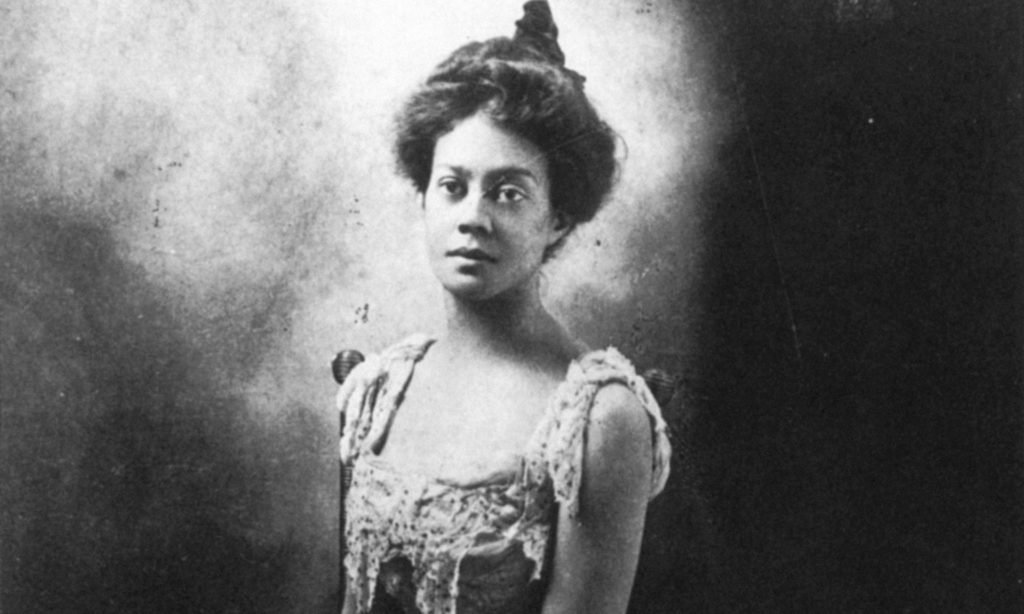Feminize Your Canon: Alice Dunbar-Nelson [View all]

Alice Dunbar-Nelson - Our column Feminize Your Canon explores the lives of underrated and underread female authors.
By Joanna Scutts September 28, 2020
In April 1895, the up-and-coming poet Paul Laurence Dunbar, whom Frederick Douglass had dubbed “the most promising young colored man in America,” saw a poem by a young writer, Alice Ruth Moore, accompanied by a photograph in which she appeared stylish and beautiful. He wrote to her immediately at her home on Palmyra Street in New Orleans, expressing his admiration, and they began an intense epistolary courtship that lasted two years. Six months in, Paul was declaring. “I love you and have loved you since the first time I saw your picture.” He called Alice “the sudden realization of an ideal!” She combined beauty with literary talent and the feminine accomplishments appropriate to an upper-class young woman of the day: “Do you recite? Do you sing? Don’t you dance divinely?” They modeled themselves self-consciously after Robert and Elizabeth Barrett Browning, another pair of lovers and writers whose romance began by letter. Paul referred to “This Mr. and Mrs. Browning affair of ours,” and Alice, after they’d married, reflected on her role as a wife who was at once muse, colleague, and practical support: “We worked together, read together, and I flattered myself that I helped him in his work. I was his amanuensis and secretary, and he was good enough to write poem after poem ‘for me,’ he said.” The Dunbars embodied the aspirational ideal of the educated, cultured African American, allowed access to the white halls of fame and power as long as they were willing to remain, flattened and fixed, in the roles of representatives of their race.
Such a role did not allow for physical passion and disorder. When the couple met in person, the refinements of their written courtship became scrawled over with violence. In November 1897, in what Paul described as “one damned night of folly,” he raped Alice, leaving her with internal injuries. Five months later, the couple eloped. The marriage lasted four years, and ended as violently as it had begun, with a drunken beating. Alice left, and never returned. Paul tried to woo her back with letters, but she answered only once, with a single word delivered by telegram: No. When he died of tuberculosis in February 1906, at the age of thirty-three, she found out by reading a notice in the newspaper. Yet despite their estrangement, Alice worked hard after Paul’s death to keep his reputation and his work alive, reading his poetry in public and, in 1920, editing The Dunbar Speaker and Entertainer, a hefty anthology of “the best prose and poetic selections by and about the Negro race,” including many selections by Paul, but also her own poetry and selections by writers from James Weldon Johnson to Abraham Lincoln, with the “Caucasian” writers denoted by an asterisk. (Alice’s portrait, rather than Paul’s, appears as a frontispiece.)
https://www.theparisreview.org/blog/2020/09/28/feminize-your-canon-alice-dunbar-nelson/

